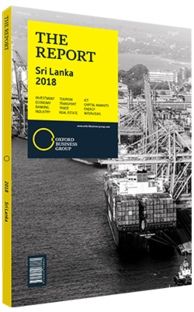Crop insurance provides Sri Lankan farmers with protection from the adverse effects of climate change
Sri Lanka was suffering from the worst drought in 40 years in 2016 and early 2017 when the country was then hit by some of the heaviest floods in decades. Flooding of the Galle and Kalutara Rivers in May 2017 caused landslides, evacuations of hundreds of thousands of farmers and significant crop damage. As these events indicate, Sri Lanka and its agriculture sector are highly vulnerable to extreme weather. A Griffith University study published in February 2017 found that just a 1°C increase in average temperature could cause at least a 4.6% reduction in Sri Lanka’s tea output, with effects worsening as climate change proceeds and the planet warms. Agricultural risk is exacerbated by the unreliability of rain patterns in comparison to the past. At the beginning of 2018 the country’s Disaster Management Centre reported that almost 300,000 people remained affected by drought in northern provinces.
Insurance
Crop insurance is one way in which the government has sought to address producers’ vulnerability to the weather. Such schemes have existed in Sri Lanka since 1961. The first private insurer to offer this coverage entered the market in 1993, and the Agriculture and Agrarian Insurance Board (AAIB) was established in 1999 to operate the government’s crop insurance programme. The AAIB provides insurance on agricultural and horticultural crops, livestock, fisheries and forestry activities, agricultural equipment, and for the storage and preservation of produce.
In May 2017 the Ministry of Finance extended crop insurance to potatoes, big onions, chillies, maize and soyabeans. Farmers are entitled to a maximum of LKR10,000 ($65.30) per acre for crop damages during natural disasters, an initiative funded by a 1% levy on the profits of all financial institutions operating in Sri Lanka since 2013. Compulsory crop insurance was introduced that year, which was combined with the government’s fertiliser subsidy programme.
One provider of crop insurance is Sanasa Insurance. With support from the World Bank and the International Labour Organisation, Sanasa introduced a weather-indexed insurance product for paddy farmers in 2011 and tea farmers in 2012 that utilises historical data from the Department of Meteorology. As of 2015, 25,000 farmers had coverage under the programmes.
Nevertheless, a 2015 study by the Institute of Policy Studies of Sri Lanka showed that 31% of survey respondents were unaware of how crop insurance worked, demonstrating the need for greater efforts to educate farmers about the schemes.
Partner Programmes
Since 2013 the UN Development Programme has run a project with the Ministry of Environment and the Green Climate Fund (GCF) to strengthen the resilience of smallholder farmers who are dependent on village irrigation systems in the country’s dry zones. With $38.1m from the GCF and $14m from the government, the project focus has been to upgrade irrigation systems, develop and disseminate climate-resilient agricultural practices, and establish effective monitoring systems for drought, floods and water management. In partnership with the government and local stakeholders, the UN Food and Agriculture Organisation has also targeted rehabilitating and improving irrigation for at least 150,000 farmers as one of its primary development goals in Sri Lanka.
Amid recent food shortages resulting from the adverse weather, in 2017 officials announced plans to create an Agriculture Logistics Network (ALN) under a public-private partnership model. The proposed ALN, which had yet to be commissioned at the time of publication, would utilise real-time monitoring of food supplies and high-tech storage and transport solutions. “The ALN will drive further development in the sector,” Rohan Pethiyagoda, chairman of the Sri Lankan Tea Board, told OBG. “For the most part, steadily improving manufacturing practices have enhanced the logistical framework of the tea industry. It is not perfect, but it is streets ahead of most other crops, given that we produce and export 300,000 tonnes of tea each year.”
You have reached the limit of premium articles you can view for free.
Choose from the options below to purchase print or digital editions of our Reports. You can also purchase a website subscription giving you unlimited access to all of our Reports online for 12 months.
If you have already purchased this Report or have a website subscription, please login to continue.

